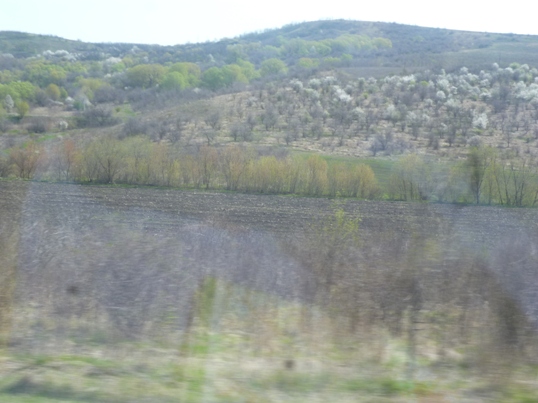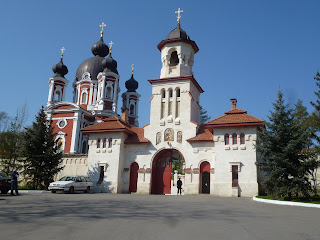With a project car, the driver Anatoli, Alexander (a Dutch collaegue and friend) we set out on a tour to visit:
1. a recently rehabilitated monastery in Curchi,
2. the Tipova waterfalls and hermitage (rock monasteries overlooking the Dniestr river) , 3. the gorge at Saharna.
The landscape is beautiful: trees beginning to show a fresh green, and cherries blossoming white ...
The hermitage is impressive - how have people been living here? No way to grwo food, so dependant on what others would have brought. And especially surviving in winter time seems a hard job, when it's cold and there is snow everywhere around!
Underway we notice that in the villages people still get their water fom a well. Yes, hauling it wth a bucket, like they used to do in our fairytales and legends. There's a problem here, since there is a lot of arsenicum in the water, children (and adults!) suffer from braindamage.

1. a recently rehabilitated monastery in Curchi,
2. the Tipova waterfalls and hermitage (rock monasteries overlooking the Dniestr river) , 3. the gorge at Saharna.
The landscape is beautiful: trees beginning to show a fresh green, and cherries blossoming white ...
The monastery in Curchi is so new that the chandeliers and other ornamenst are still packed in plastic. We discover that we have never ever seen a church newly built and decorated like this.
The sight at / of the Dniestr river is amazingly beautiful, a shallow and slow going river with reeds groing in its inner bends, very natural, here and there willowtrees showing the 'natural succession' of which - I am sure - the Dutch ecologists woud be jealous!
The hermitage is impressive - how have people been living here? No way to grwo food, so dependant on what others would have brought. And especially surviving in winter time seems a hard job, when it's cold and there is snow everywhere around!
Underway we notice that in the villages people still get their water fom a well. Yes, hauling it wth a bucket, like they used to do in our fairytales and legends. There's a problem here, since there is a lot of arsenicum in the water, children (and adults!) suffer from braindamage.


We end this spectacular day with a walk to yet another waterfalls - underway we see dark red nettle, and wild bluebells.
After that it is 1,5 hours back to Chisinau where we eat a schaslick at a restaurant, outside on the terrace in the sun! And the go home quickly to download pictures, work on the weblog, call home to the kids and go to bed early.
















































